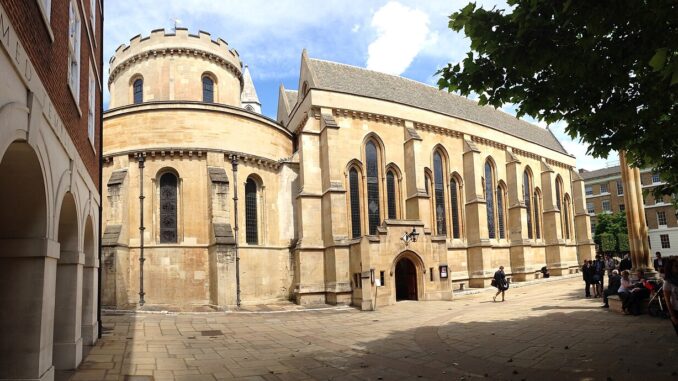
At the top end of Strand opposite the Royal Courts of Justice is Devereux Court. Step off the main road along there and you enter a different world.
This is Temple, the demesne (the archaic word seems appropriate) of barristers, the bewigged and begowned lawyers who represent clients in court.
There are four ‘Inns of Court’ to which barristers belong: Lincoln’s Inn, Gray’s Inn, and Middle and Inner Temple. Each is a green oasis, lush gardens fringed by 18th and 19th century terraced houses where the barristers’ offices – known as their ‘chambers’ – can be found. Each has a library, a grand hall and a chapel, so each feels like one of the better sort of Oxbridge college (although with more expensive cars and fewer students.
But it is Temple Church that we will visit today, the rather wondrous jewel that is shared by the Inner and Middle Temples, and which had a role in Dan Brown’s ludicrous ‘Da Vinci Code’ (which we shall mention no further).
This is one of the oldest extant buildings in London, having been consecrated in 1185 by the Patriarch of Jerusalem, and the association with the Holy Land is part of the essence of Temple Church, as it was built for the Knights Templar, a military order of crusaders whose purpose was to defend pilgrims on their way to Jerusalem.
The oldest part of the church is the round nave (called the ‘Round Church’) – round because it is modelled on the Church of the Holy Sepulchre in Jerusalem, which christians believed was built on the site of the tomb to which Christ’s body was consigned (and from which it rose again) after the crucifixion.
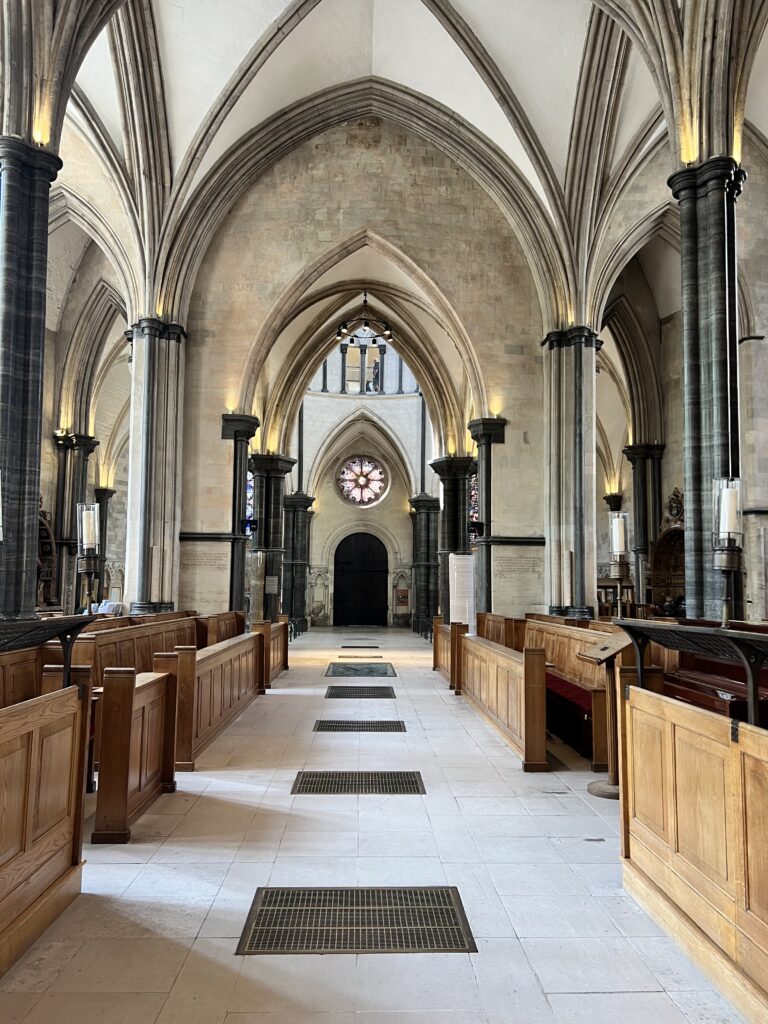
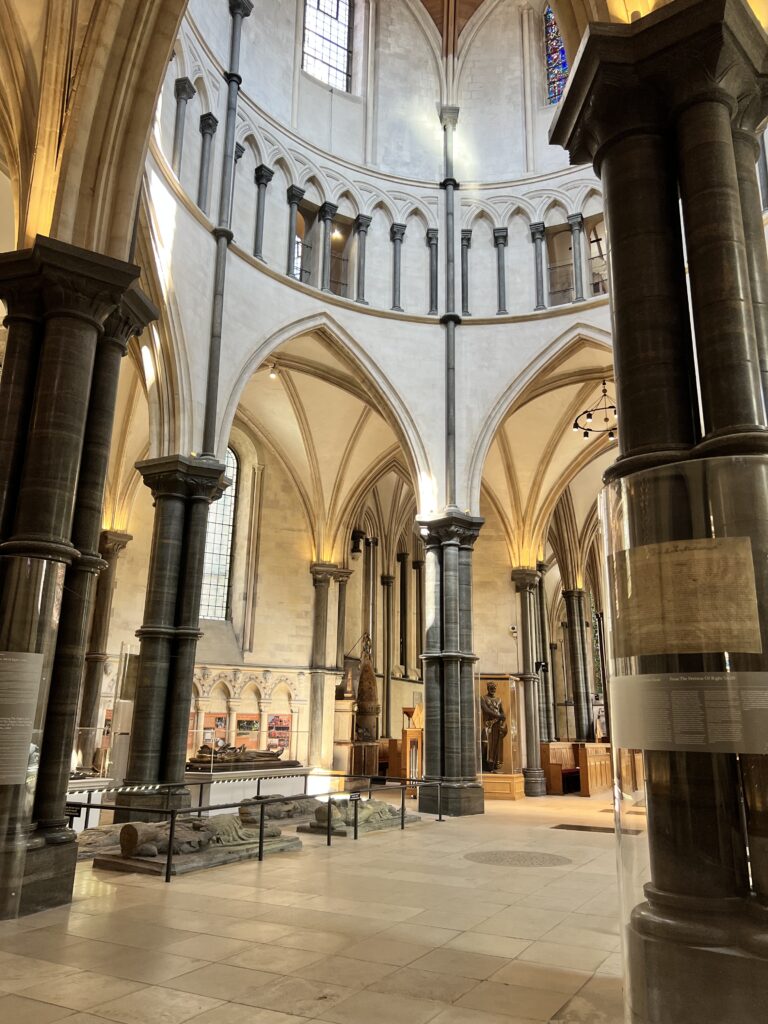
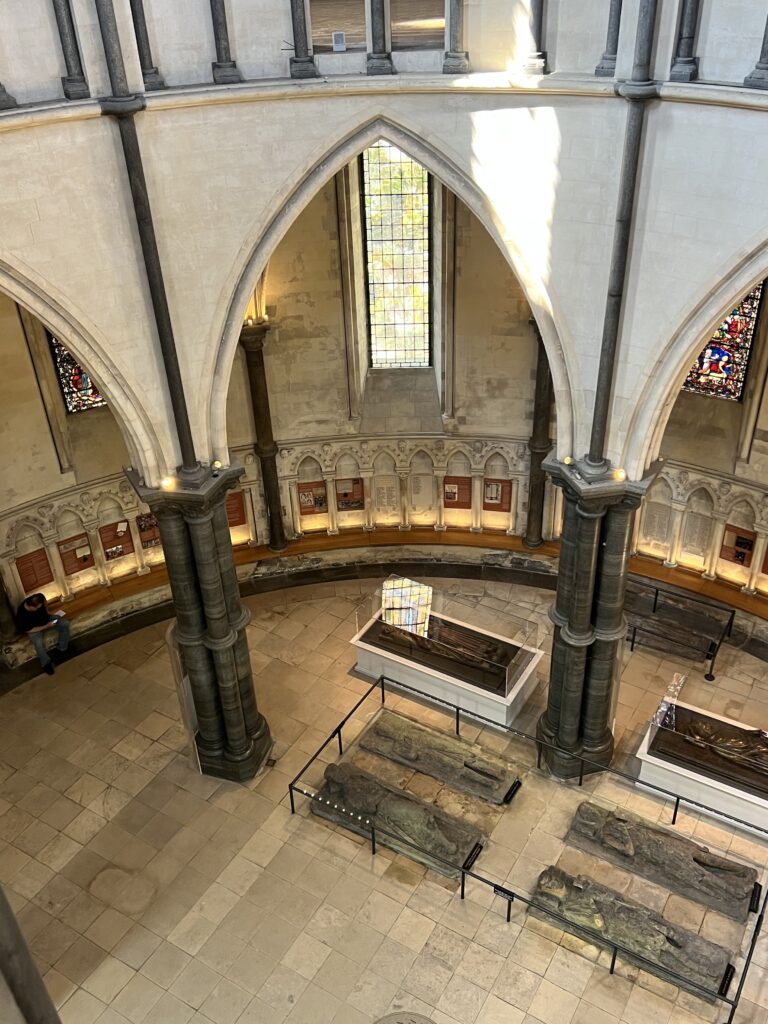
The Holy Sepulchre was the holiest church in Christendom, the ultimate destination for pilgrims, and many Templar churches were circular in construction.
In the 1240s a rectangular chancel was added to the original Round Church. This was built because Henry III expressed a desire to be buried in Temple Church and the existing chancel was not felt to be grand enough for a royal burial. (As it happened Henry changed his mind – his tomb can be seen in one of his own grand construction projects, Westminster Abbey.)
The Knights Templar – rich, powerful and international – fell out of favour with European rulers in the early 1300s. Pope Clement II disbanded the order in 1312, but even before then Edward II had abolished the Order in England and taken control of their lands, which meant that the Church was now owned by the Crown. (It is still a ‘Royal Peculiar’, which means that the choristers can wear scarlet cassocks.)
The Church was given to another crusader order, the Knights Hospitaller (aka the Order of St John, the remains of whose priory can still be seen in Clerkenwell). It was the Hospitallers who first leased the area to lawyers, two colleges of whom moved in in the mid 1300s and who evolved into the Societies of the Inner and Middle Temple. These Societies survived Henry VIII’s seizure of the Knights Hospitaller’s property and in 1608 James I granted the Inns the use of Temple in perpetuity on condition that they “well and efficiently maintain and keep up the aforesaid church, the chancel and the belfry … at their own expense”. In 2008, to mark the quatercentenary of the 1608 agreement, Elizabeth II reissued the Letters Patent that granted the land.
The church survived the Great Fire of 1666 – the flames destroyed a large part of Inner Temple but that was the western limit of the destruction – but not World War Two; on 10 May 1941 (the penultimate night of the Blitz), incendiary bombs destroyed the Round Church and the Chancel. Rebuilding took until 1958 (and had a consequence that a lot of the, by then, very unpopular Victorian restoration and faux medievalism could be ignored, and the church restored closer to its original look and feel).
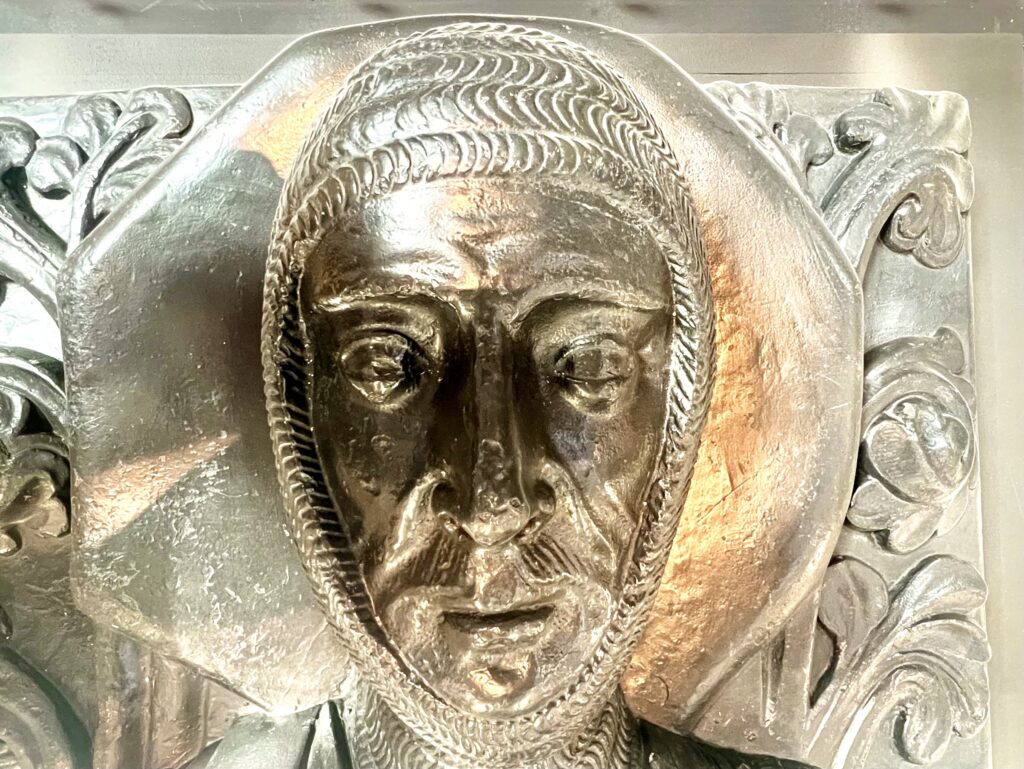
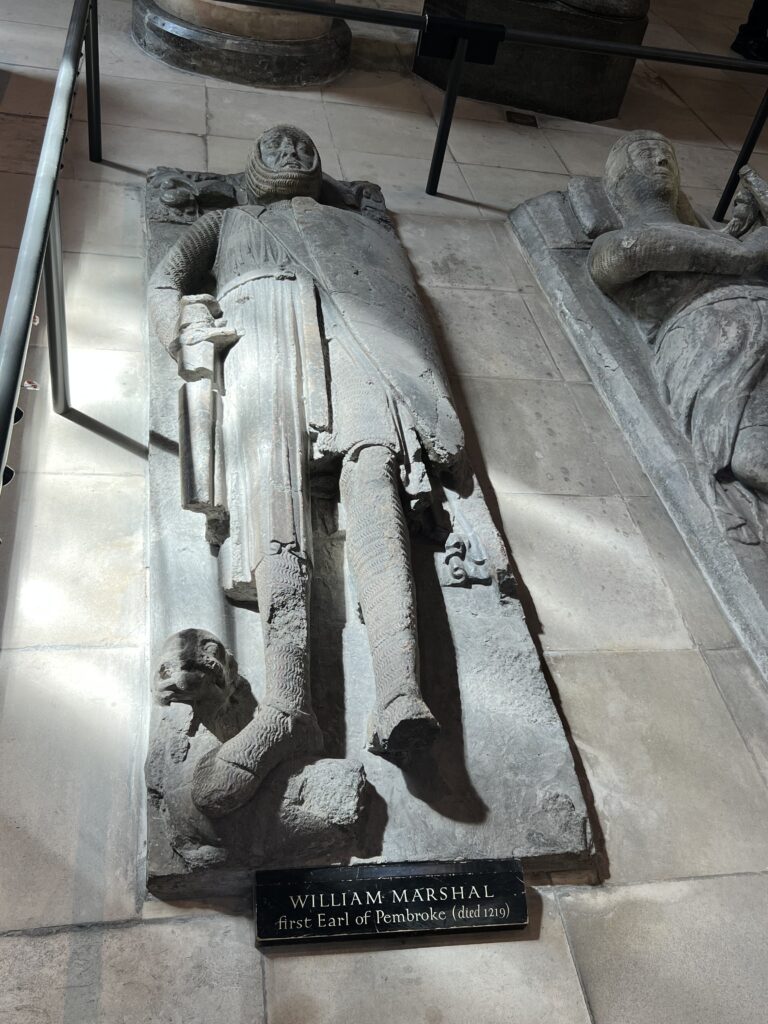
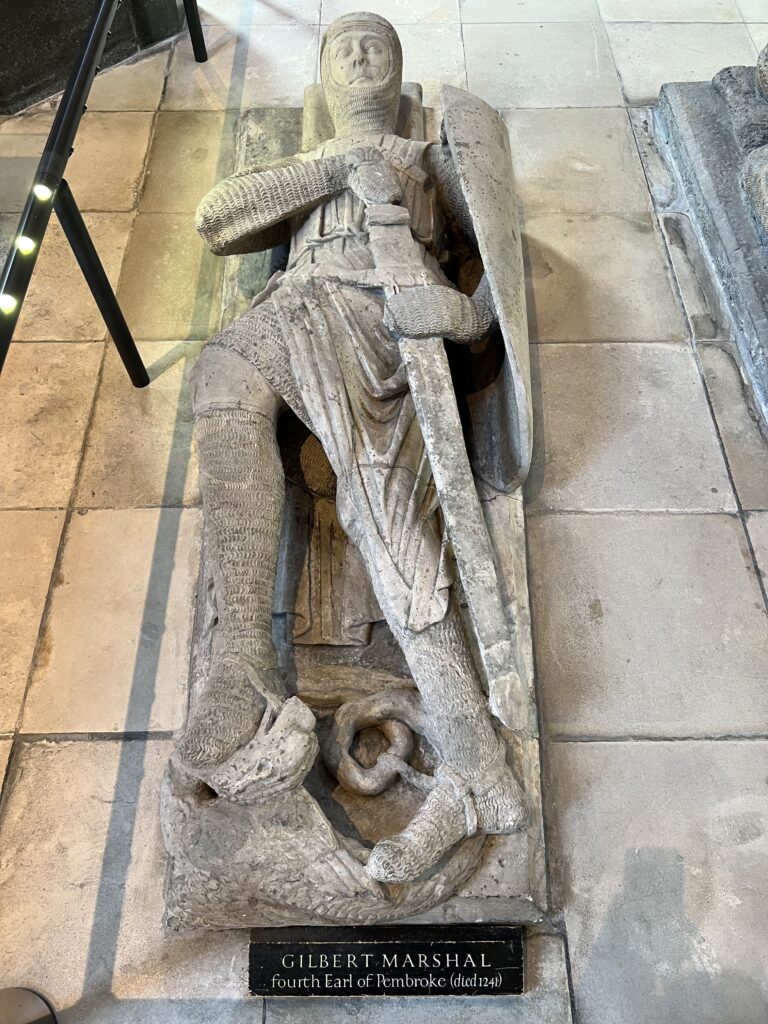
The interior space of the church is beautiful and calming, and worth the £5 entry fee. Climb the spiral stone steps to the triforium and you can gaze down on the Round Church and on the effigies of medieval knights. The most famous of these is William Marshall, First Earl of Pembroke, Regent for the infant Henry III, negotiator between King John and the rebellious barons, and promoter of Magna Carta.
On the way up the stairs you pass the ‘penitential cell’, a tiny room – too small for a man to lie down – where transgressors against the rules of the Order could be confined. If you want to feel a frisson, recall that in 1301 in this cell Walter le Bachelor was imprisoned and starved to death.
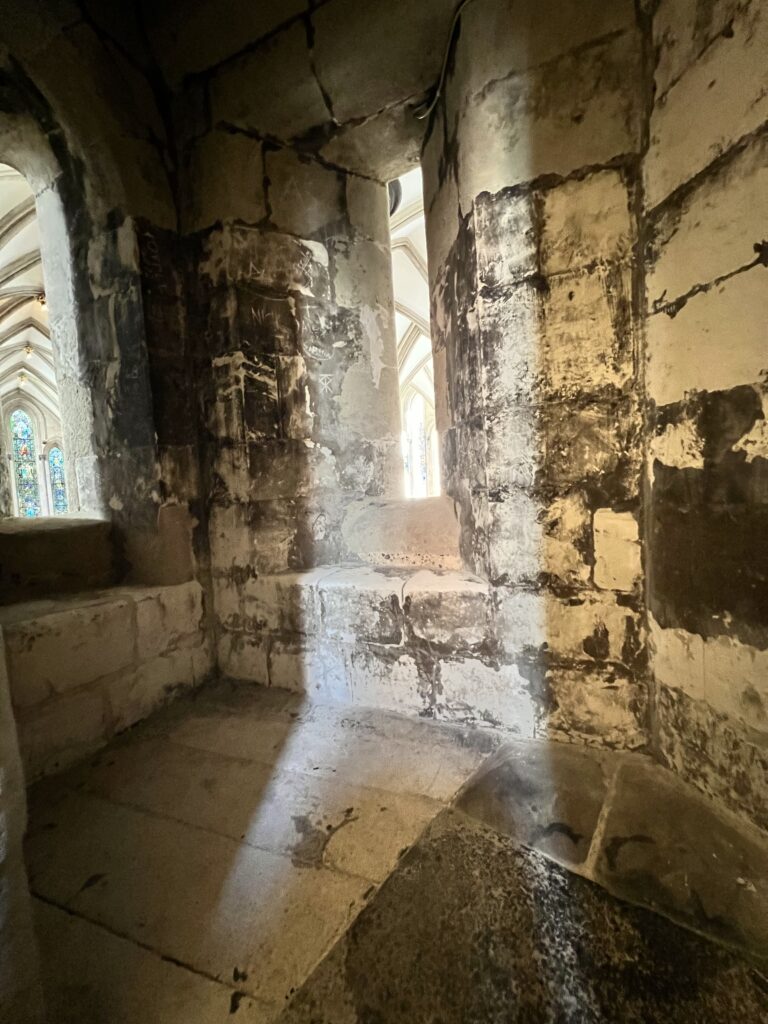
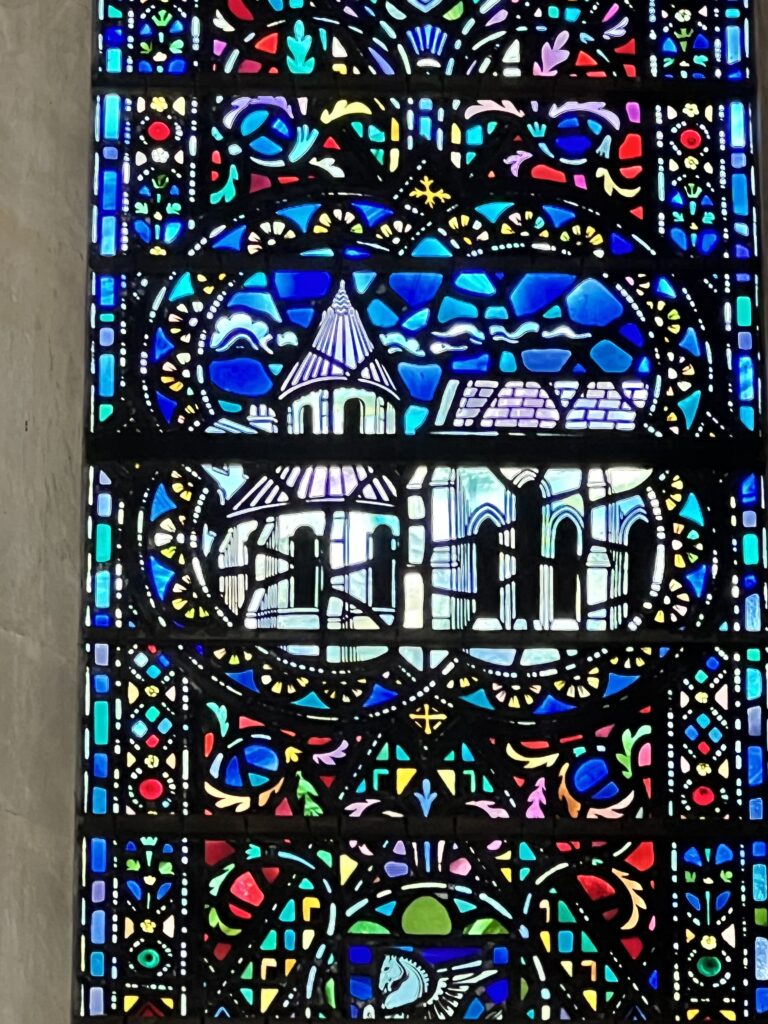
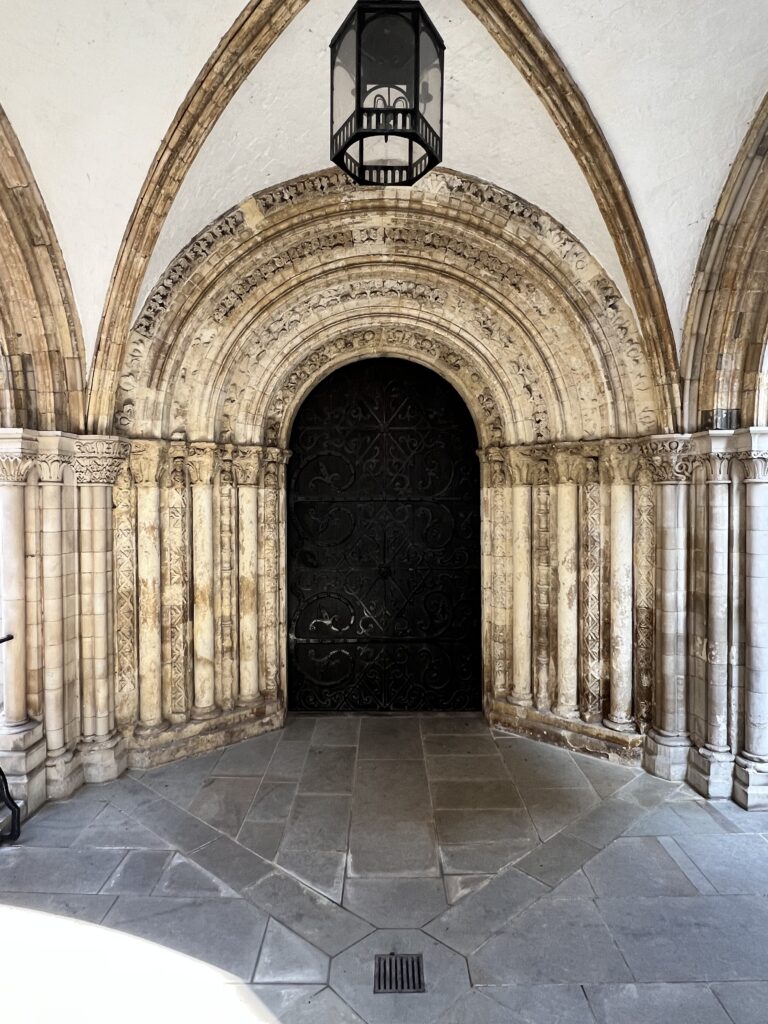
Opening times, concerts and service information, plus a lot more history, can be found on the Temple Church’s website.

